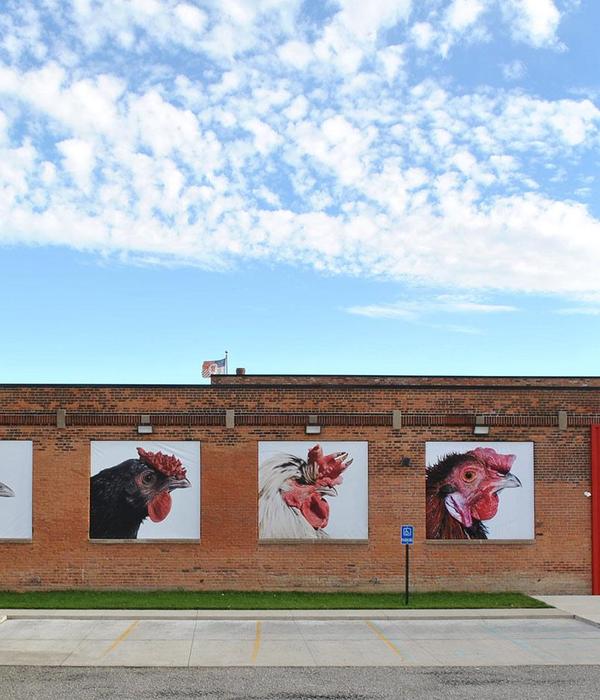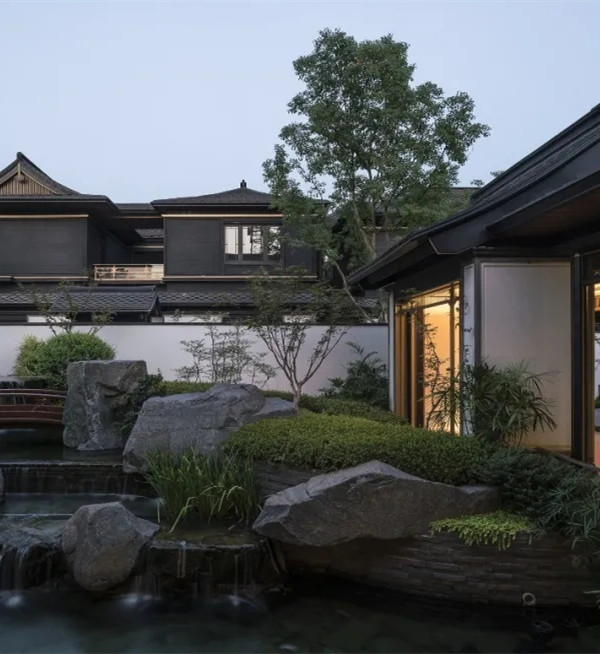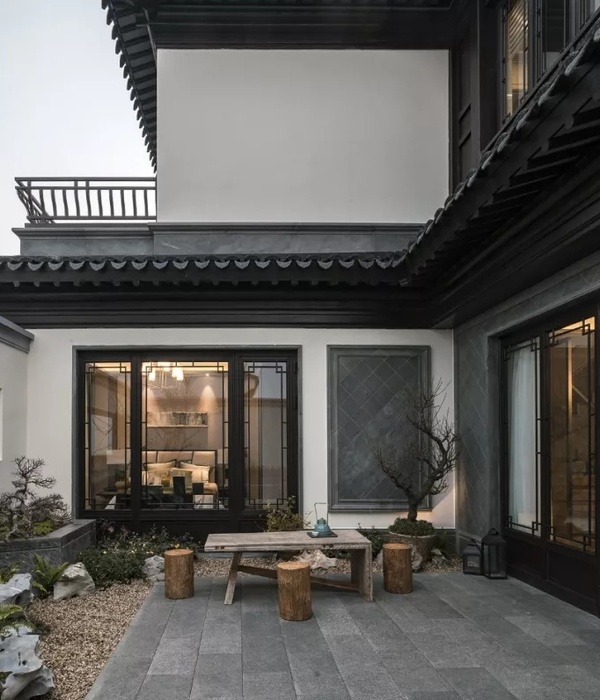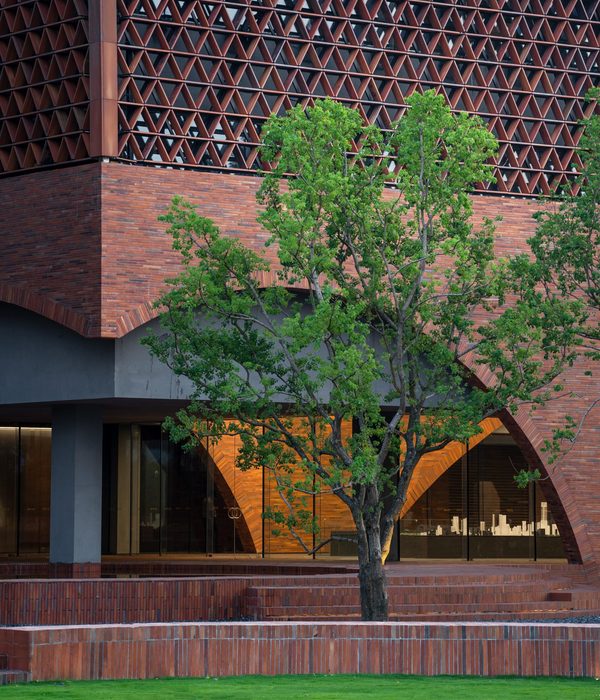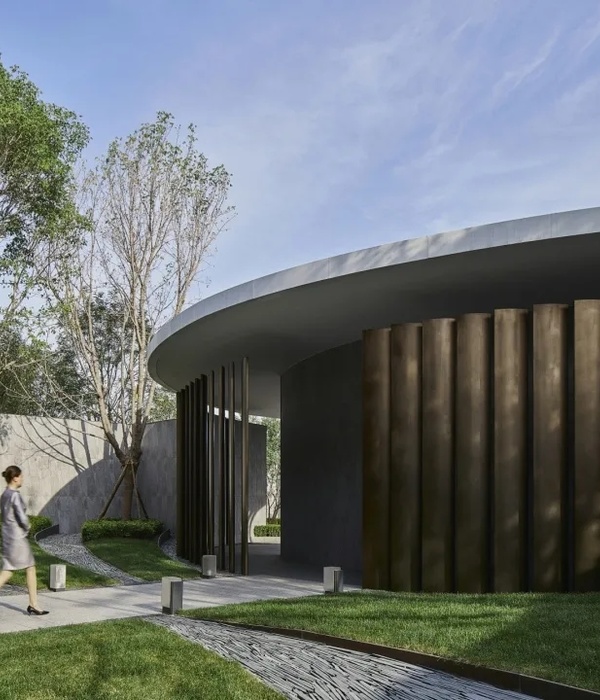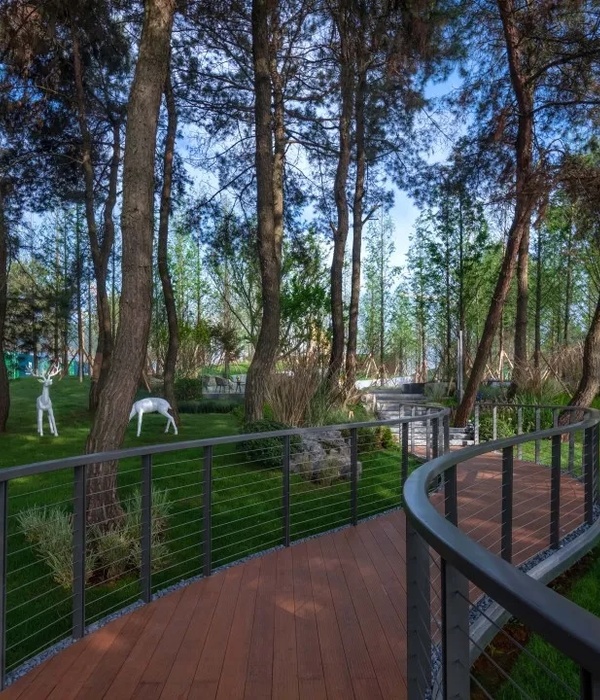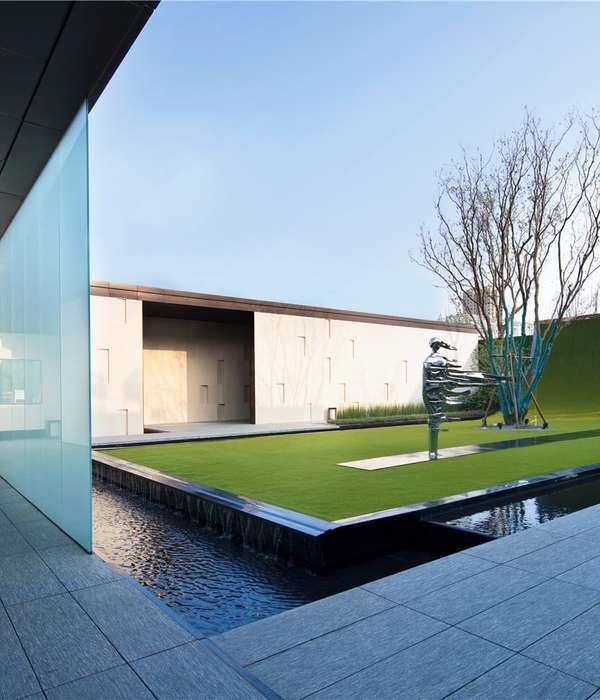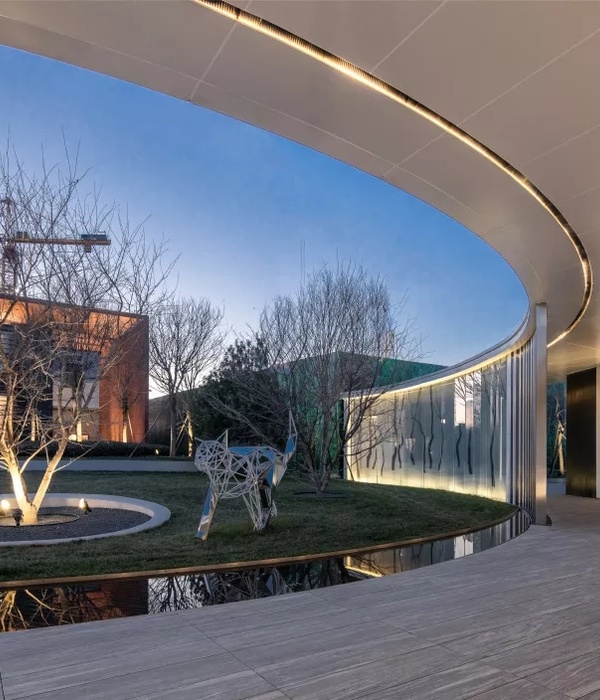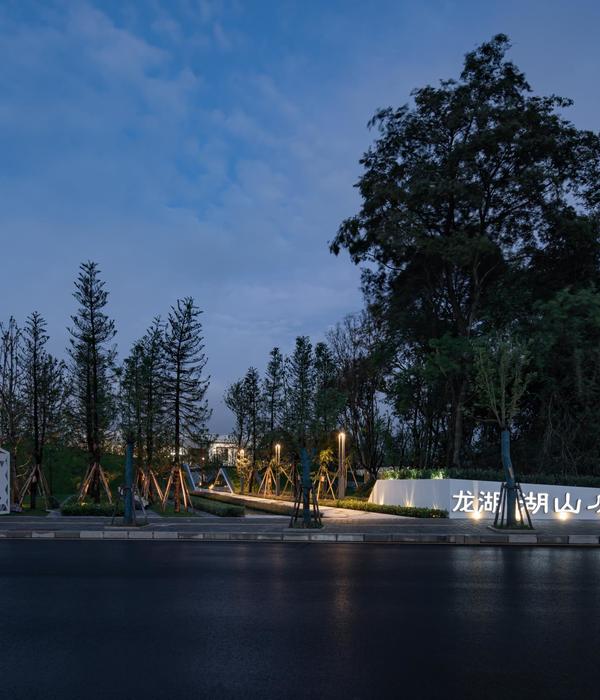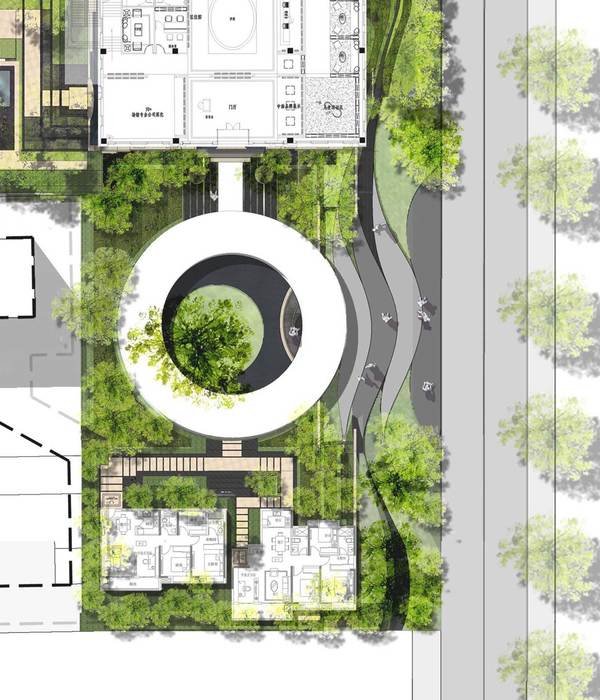PRY1 is located in Prachinburi, at a foothill of Khao Yai National Park known for its rich natural resources. Overlooking the mountains that are parts of Khao Yai National Park, the location of PRY1 is ideal for its purpose as a retreat hotel. Meaning “jungle,” the name PRY1 suggests its relationship with both its immediate manmade landscape and the natural surroundings beyond its vicinity. Appearing in its simplest geometrical form and architectural language, the hotel is designed to be a tacit background for both the activities of its guests and the ever-transforming natural environment around it.
Organized into three levels, the guests are welcomed into the most public spaces on the ground floor. Reception and lobby acts not only as a point of entry but also becomes a welcoming living spaces for everyone. Living and dining spaces are also interconnected, enveloping the outdoor swimming pool and act as its background. Activities are not bounded within the perimeter of their designated spaces, but flow from one place onto the next without interruption. Towards another end located a quiet library where guests can retreat into both the books in hand and the view of the mountains before them.
All of 32 hotel rooms are oriented towards the mountains which are brought closer by wide and welcoming apertures. As the walls separating the guests and the mountains are dematerialized, one feels as if one is at once inside and out. Stepping inside the hotel room, one belongs to both the silent interior spaces and the expressive exterior background. The buildings and the mountain, though contrast in their physical appearances, gradually merge and become a part of each other. The climate, which enables the guests to spend time outdoors, has brought forth the design equipped with verandahs, porches and walkways. This makes it possible for inhabitants to spend time both inside and outside, and also in the in-between areas. Shadows for rest and for residing are produced by the brim of solid slab, under which activities could unfold. By means of open-air covered spaces, interior and exterior are bound together.
The architecture that PRY1 presented as essentially Thai is not necessarily of native or traditional origin. While the spatial organizations answer to particular requirements, the meticulous details are born out of both contemporary materials and techniques. And those “current” elements are not examples of traditional building, if that term is taken to mean in the manner or the styles of native Thais. This separates PRY1’s position from the back-to-the-roots or the new-vernacular movement now beginning to emerge in Thailand. Each of these characteristics has a positive side. An architecture that seeks to be local, but arises out of diverse intelligences, becomes an architecture that is not styled in the manner of traditional motifs but may be maintained by contemporary possibilities. Thus the architecture of PRY1 offers a tradition that does not represent a faith in what is now past, but is one that continue a living, reanimated faith in what has been shown to be still relevant today.
{{item.text_origin}}

